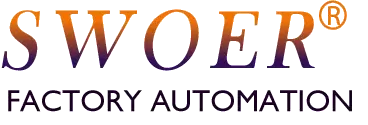The core advantage of vibratory bowls is their ability to sort, orient, and feed a large volume of small, sturdy parts at high speed and in an automated manner.
- Standard Fasteners
This is the most classic and widespread application for vibratory bowls.
- Examples: Screws, nuts, bolts, washers, rivets, pins.
- Reason: These parts are typically made of metal, making them sturdy and suitable for vibration; their regular shapes make them easy to orient using bowl tooling (e.g., grooves, wiper blades).
- Componentes Eletrônicos
Vibratory bowls are standard equipment in processes like PCB assembly.
- Examples: Resistors, capacitors, inductors, diodes, transistors, connectors, LEDs.
- Reason: The parts are small, required in large quantities, and perfectly suited for the high-speed feeding of bowls. Bowls and tracks can be treated to be anti-static for protecting sensitive components.
- Small Hardware & Mechanical Parts
Any metal or rigid plastic part that requires automated assembly is a candidate for vibratory bowls.
- Examples: Bearing balls, small gears, stamped parts, bushings, cutting tools, sewing needles.
- Reason: These parts are generally robust enough to withstand the minor impacts during the vibration process.
- Medical Devices & Pharmaceuticals
Vibratory bowls made of special materials (e.g., medical-grade stainless steel) are used in sterile or clean environments.
- Examples: Syringe needles, tablets, capsules, small surgical instruments, bottle caps.
- Reason: They require automated feeding with high precision and cleanliness. Bowls can be designed to be fully enclosed and easy to clean.
- Consumer Goods
- Examples: Pen refills, lighter components, buttons, zipper sliders, bottle caps, cosmetic packaging components.
- Reason: They meet the demands of large-scale, high-efficiency production.
